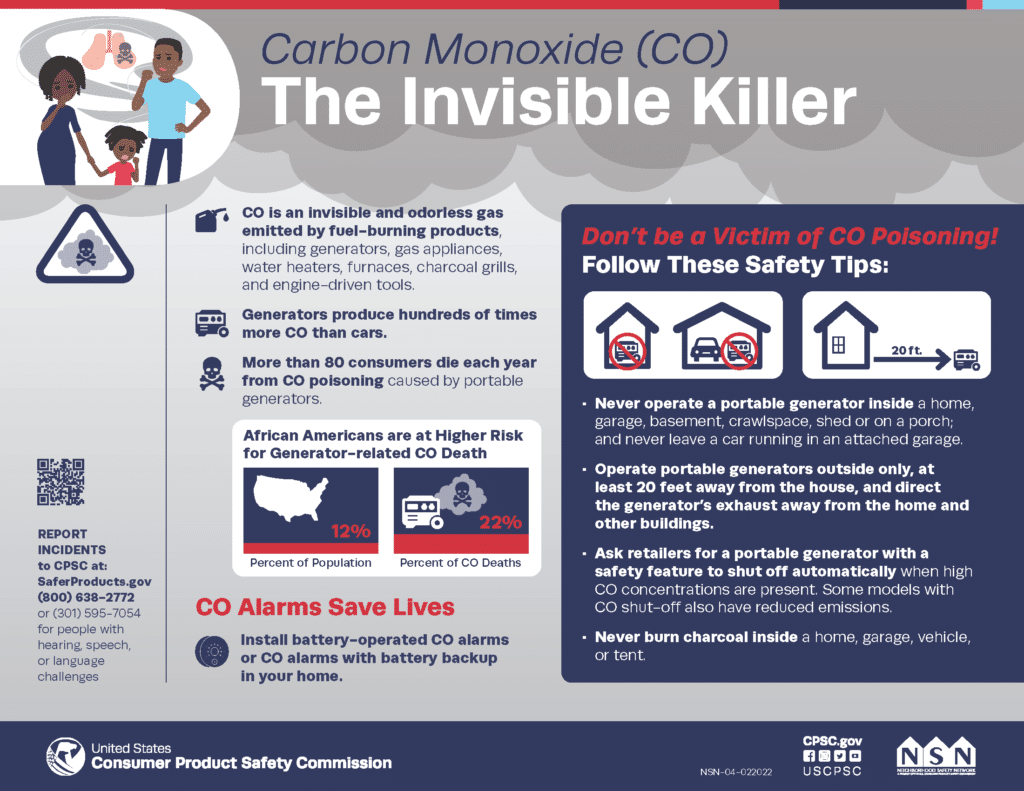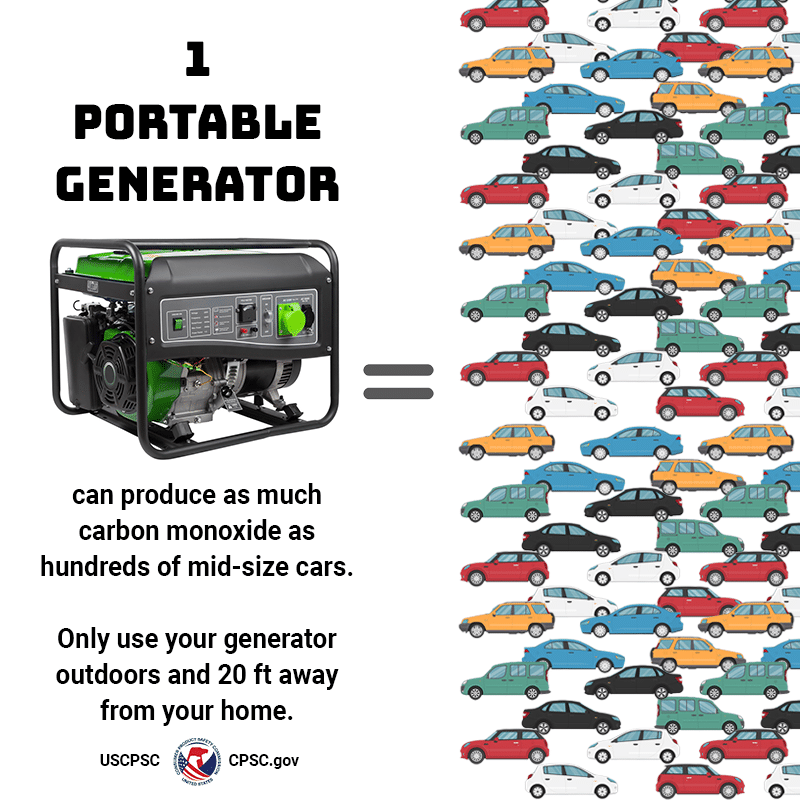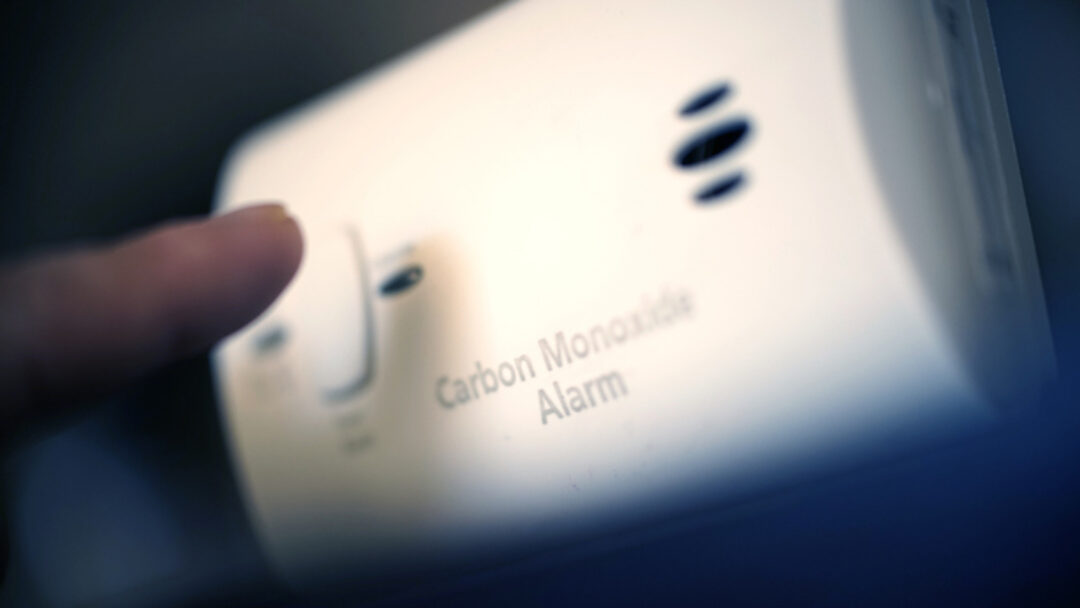The U.S. Consumer Product Safety Commission (CPSC) released on Tuesday a new report that shows an upward trend in non-fire carbon monoxide (CO) poisoning deaths. The report, Non-Fire Carbon Monoxide Deaths Associated with the Use of Consumer Products 2019 Annual Estimates, covers deaths from 2009 to 2019.
Most CO deaths occur in the colder months of the year, with more than half of the deaths occurring during the four cold months of November, December, January and February.
For 2019, there were an estimated 250 consumer product-related CO deaths in the United States – greater than any other year in the report. Engine-Driven Tools (EDTs), including generators, were associated with the largest percentage of non-fire CO poisoning deaths for 2019. The report shows that since 2009, portable generators alone have been associated with an estimated 765 non-fire CO poisoning deaths, accounting for 40 percent of all CO deaths related to consumer products under CPSC’s jurisdiction.

Heating systems were associated with the second largest percentage of non-fire CO poisoning deaths for 2019. An estimated 69 deaths (28%) were associated with products in this category.
CO is called the invisible killer because it is colorless and odorless and can kill in minutes.CO poisoning can happen so quickly that exposed persons may become unconscious before recognizing the symptoms of nausea, dizziness or weakness.
CPSC urges consumers to take safety precautions to prevent CO poisoning.
Portable Generators
Use portable generators OUTSIDE ONLY, and place them at least 20 feet from the home with exhaust pointed away from any nearby building. NEVER operate a portable generator inside a home, garage, basement, crawlspace or shed. Opening doors or windows will not provide enough ventilation to prevent the buildup of lethal levels of CO.
Check that portable generators have been maintained properly, and read and follow the labels, instructions and warnings on the generator and in the owner’s manual. Look for portable generators that have a CO shut-off safety feature, which is designed to shut the generator off automatically when high levels of CO are present around the generator. These models may be advertised as certified to the latest safety standards for portable generators–PGMA G300-2018 and UL 2201–which are estimated to reduce deaths from CO poisoning by 87% and 100%, respectively. UL 2201 certified models have reduced CO emissions in addition to the CO shut-off feature.

Heating Products
Have a professional inspect all fuel-burning heating products, including furnaces, boilers, fireplaces, wood stoves, water heaters, chimneys, flues and vents each year. These and other heating products can cause CO poisoning if they are improperly installed, poorly maintained, have defective or blocked venting systems or are misused. Clear snow away from the outside vents for fuel-burning appliances such as furnaces so that dangerous carbon monoxide does not build up in the house.
CO Alarms
Working CO alarms save lives! Install CO alarms on every level of the home and outside sleeping areas. Alarms that are not battery operated should have battery backup in case of a power outage. Interconnected alarms are best because, when one sounds, they all sound. Test the alarms every month to make sure they are working. Replace batteries at least once every year, or install CO alarms with sealed, 10-year batteries.
Read more safety tips in our Carbon Monoxide Safety Center.








